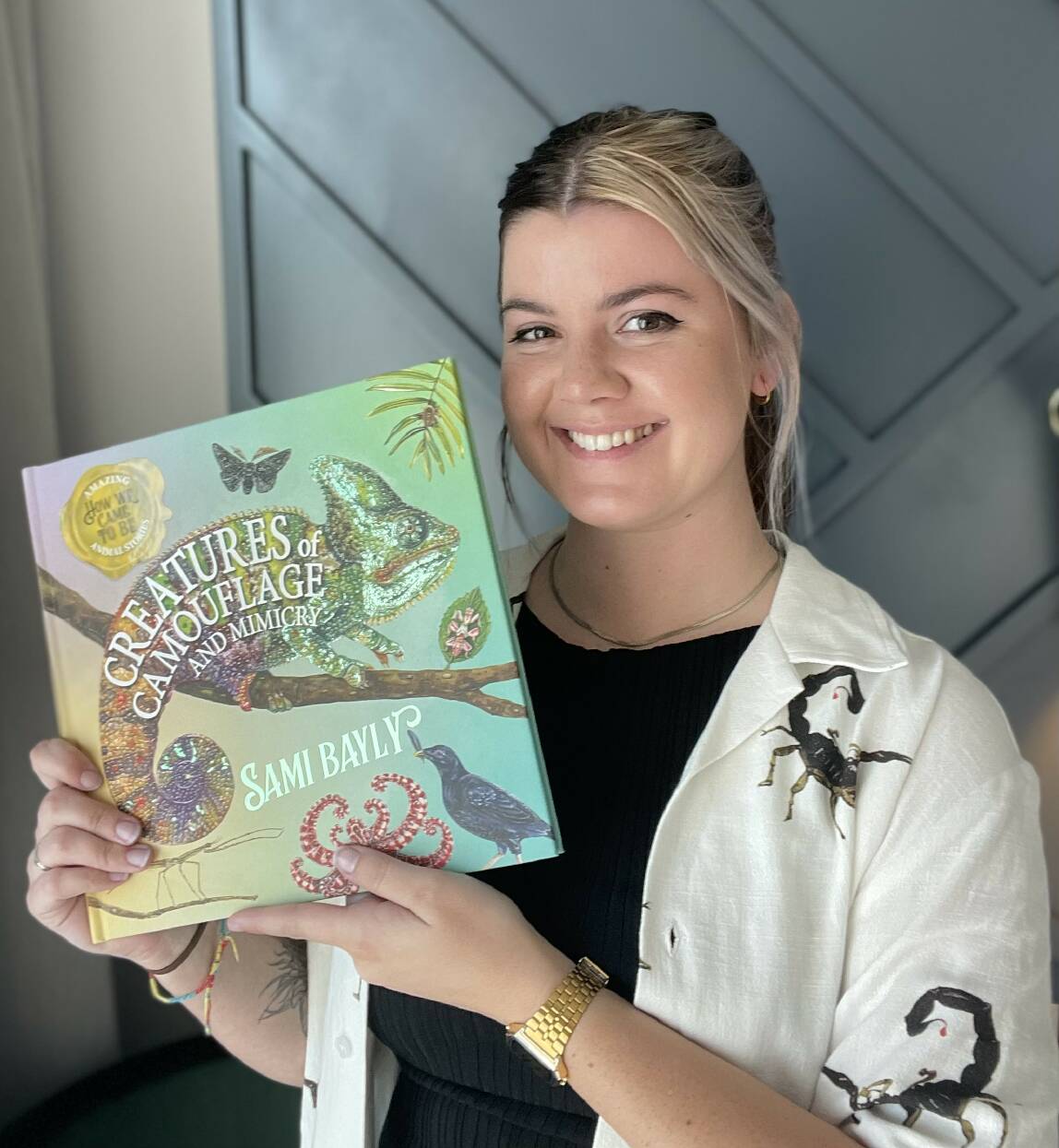
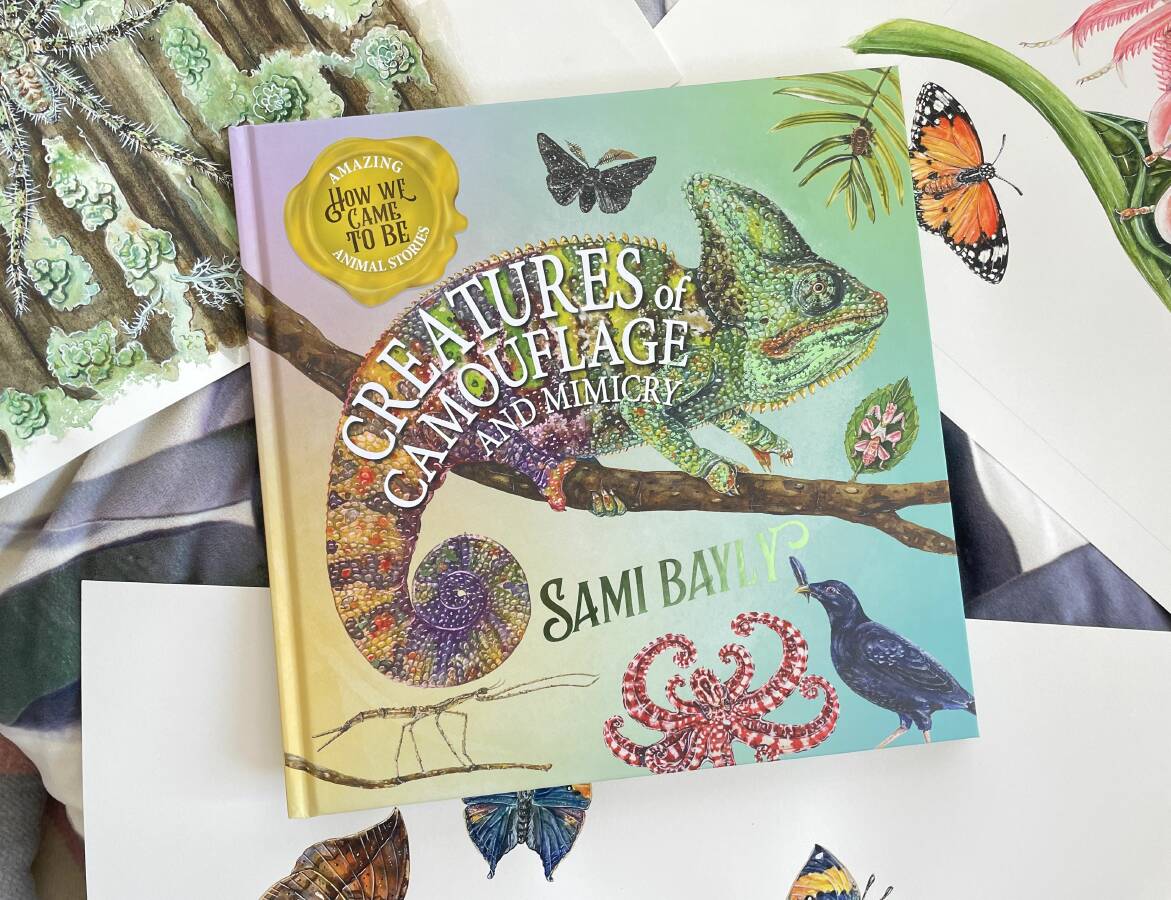

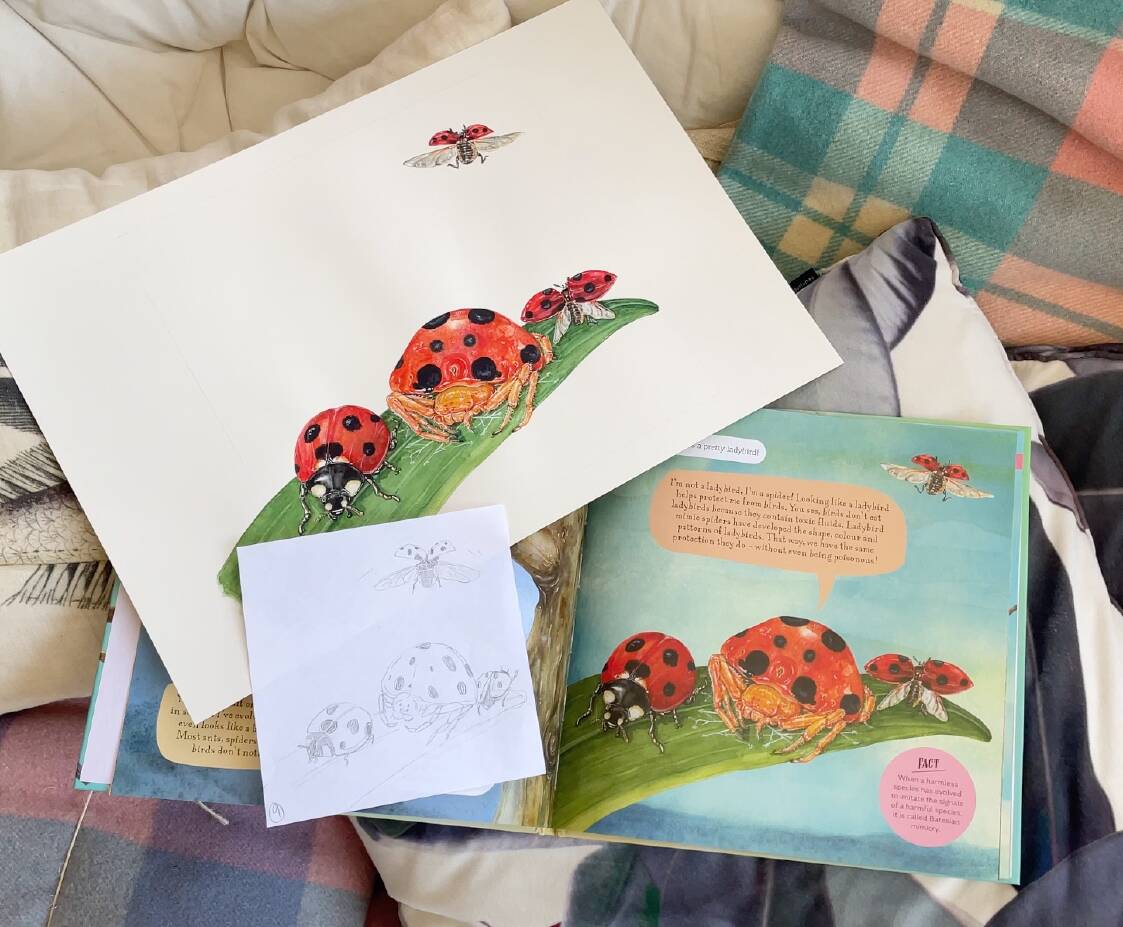

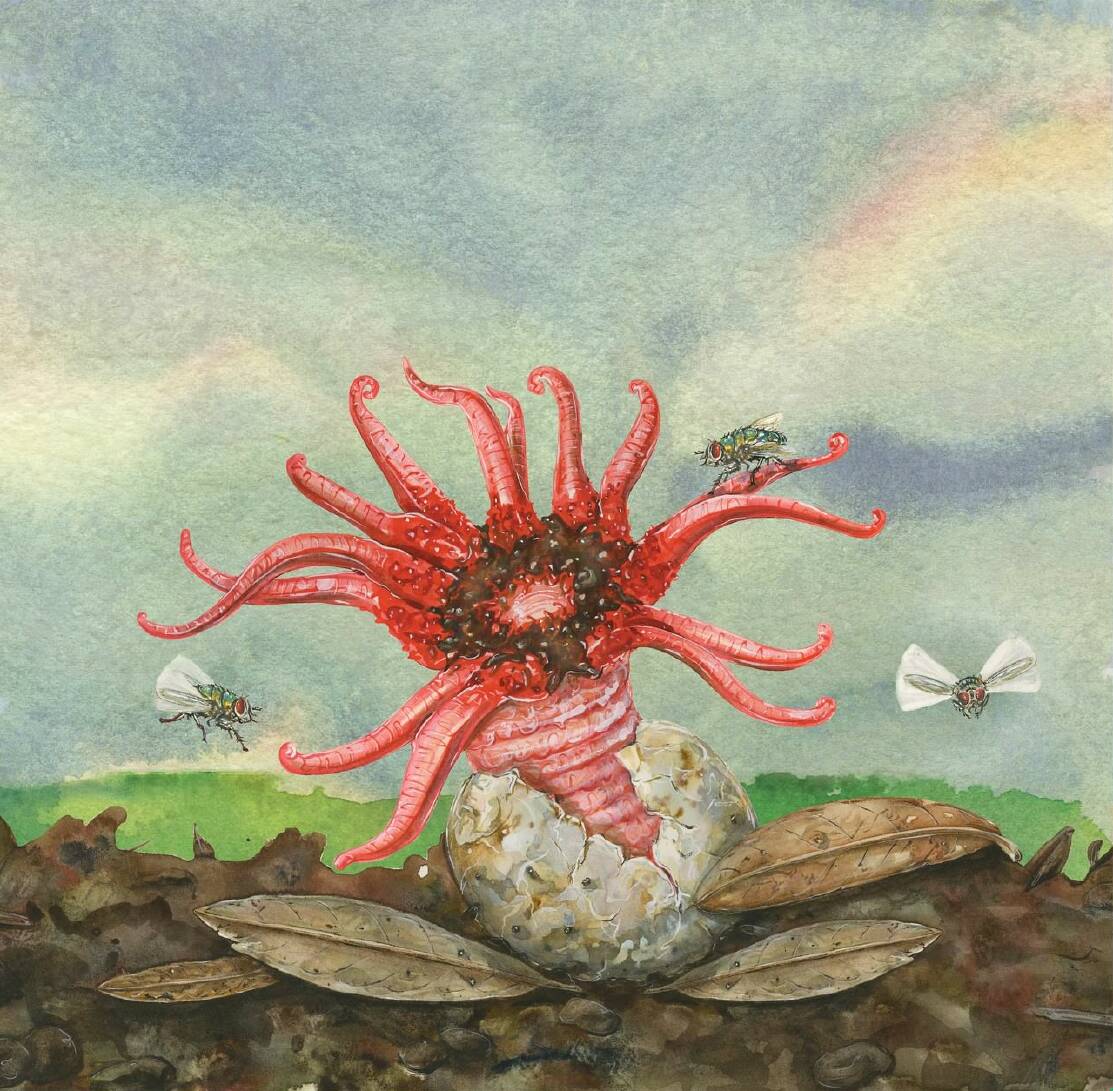
If there's one thing Sami Bayly learnt from compiling her new illustrated book, it's "how bizarre, strange and complex evolution is".
The children's book, How We Came To Be: Creatures of Camouflage and Mimicry, was released on Tuesday.
Ms Bayly, of East Maitland, said "animals have developed such strange abilities".
Camouflage and mimicry are considered to be widespread in the animal kingdom. Her book examines why creatures benefit from these traits, and it's not all about defence from predators.
"You think of the obvious ones like the chameleon, but it doesn't change colours to blend in with its surroundings. It does it to communicate emotions, heat up or cool down or find a mate," she said.
"It started me thinking about all the misconceptions of creatures of camouflage. It sent me into a spin of finding so many weird things after that."
There was a "wide world" of animals beyond the chameleon, who used camouflage and mimicry.
"I struggled to choose a small amount of animals to go in the book."
She sought to understand "why animals do these things that seem so extravagant" and to communicate the answers in simple form to children.
This is Ms Bayly's fifth illustrated book in five years. Her first was The Illustrated Encyclopaedia of Ugly Animals. She's planning a sixth next year - another encyclopedia.
Doing book workshops in schools is a big motivator.
"You forget when you're making a book in your office that this is actually a thing that's being seen and appreciated by kids, and how much of a difference it can make in their learning journey," she said.
The satin bowerbird with its "strange nest of blue things" and the "gross, stinky starfish stinkhorn fungus" were local inspirations for the book.
"We get these in Newcastle," she said.
"The fungus is a strange pink, fleshy octopus-like thing that comes out from the soil and hatches from an egg-like feature.
"It unveils its tentacles and releases this horrendous odour to lure in carrion flies and poo- and flesh-eating animals. They step on it and help spread its spores.
"Get up close and smell it and you'll regret it."
Hugo Turns 73
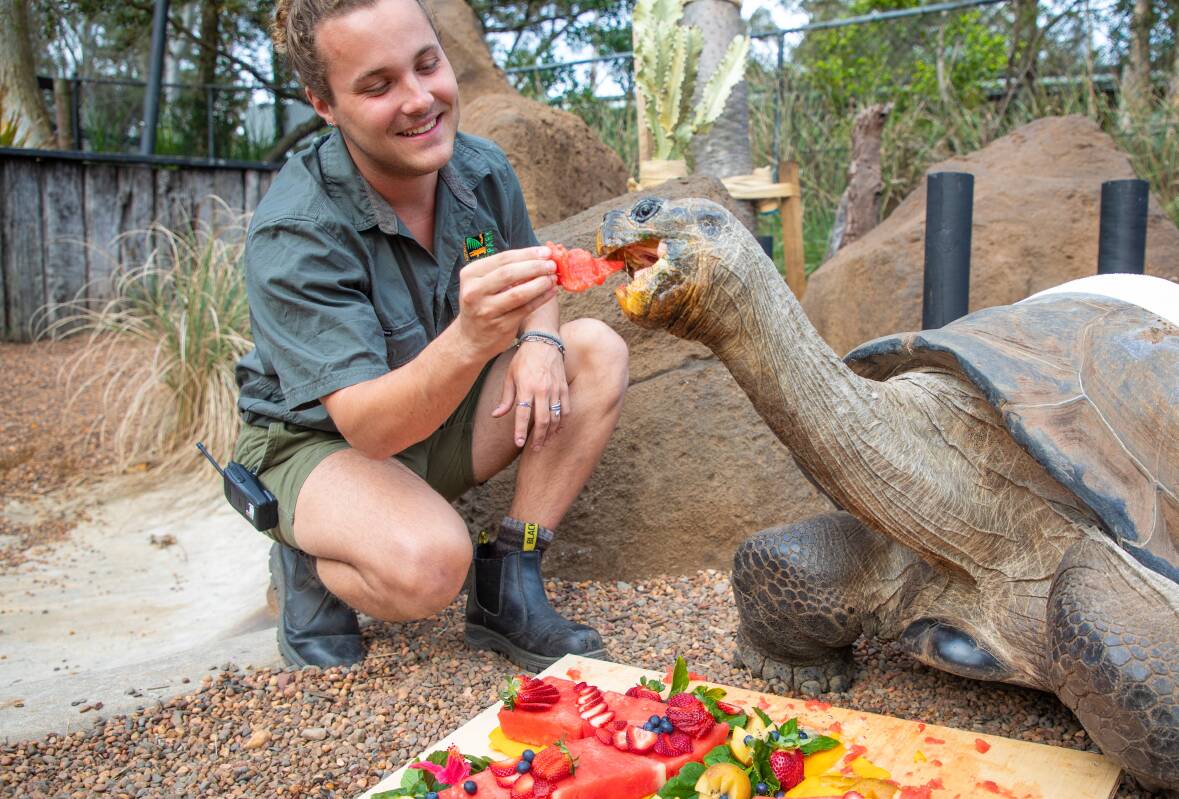
Hugo the Galapagos tortoise celebrated his 73rd birthday on Wednesday.
The Australian Reptile Park resident had a watermelon and hibiscus cake for his big day.
After eating his cake, Hugo went on his daily walk and received some pats and love from visitors.
Hugo is the park's oldest resident. He's lived at the wildlife sanctuary near Gosford since 1963.
He has now reached middle age and is expected to live beyond 150. He weighs 183 kilograms.
His diet consists of carrots, bamboo stalks, hibiscus leaves and flowers, lucerne hay and other foods that are high in fibre, with the odd piece of fruit as a treat.
Reptile keeper Imogen Hall said "he is full of personality and will greet anyone with a big smile".
"I love working with him and watching everyone's faces light up when they see him for the first time," she said.
"I always say if you didn't give Hugo's shell a rub, you haven't visited the Australian Reptile Park. It really does give you good luck."







